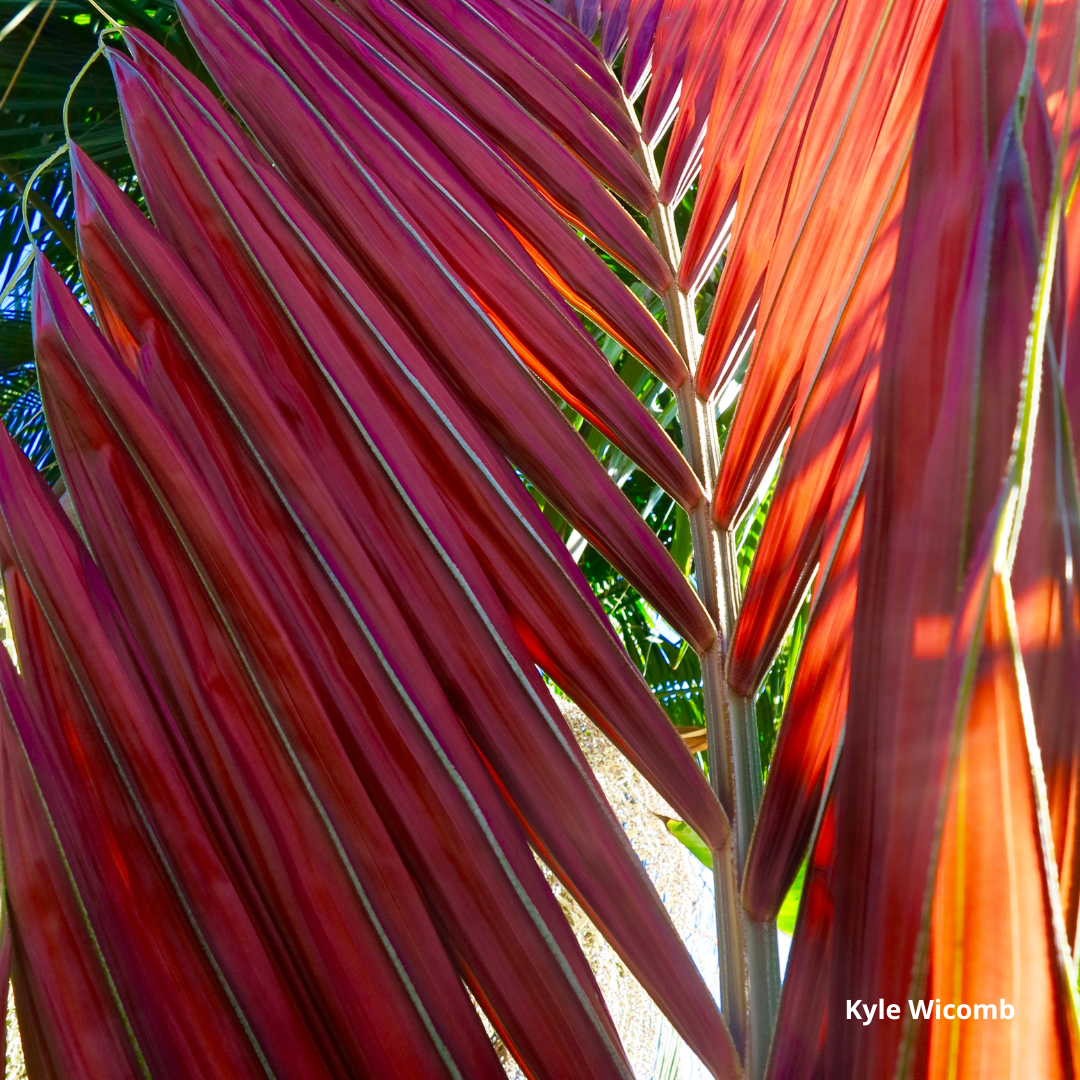VIRIAR
Chambeyronia macrocarpa 'Hookeri', Red Leaf Palm -3°C (27°F) - 2 X fresh seeds
Chambeyronia macrocarpa 'Hookeri', Red Leaf Palm -3°C (27°F) - 2 X fresh seeds
Couldn't load pickup availability
Plant Description
Name: Chambeyronia macrocarpa 'Hookeri'
Common Name: Hooker’s Red Palm, Hooker’s Crown Shaft Palm
Chambeyronia macrocarpa 'Hookeri', commonly known as Hooker’s Red Palm or Hooker’s Crown Shaft Palm, is a spectacular and eye-catching palm native to the rainforests of New Caledonia. This cultivar of Chambeyronia macrocarpa is renowned for its striking red crown shaft and vibrant, ornamental appearance.
The Hooker’s Red Palm features a slender, upright trunk with a bright red crown shaft, making it a standout in tropical and subtropical gardens. The palm is characterized by its large, pinnate leaves, which are deep green and gracefully arch from the crown. This variety is relatively slow-growing but can eventually reach a height of 6-12 meters (20-40 feet) in its native habitat. The combination of its vivid crown shaft and elegant foliage makes it a prized addition to landscape design.
Cultivation of Chambeyronia macrocarpa 'Hookeri'
Conditions:
- Light: Chambeyronia macrocarpa 'Hookeri' thrives in bright, indirect light or partial shade. It can tolerate some direct sunlight but may require protection from the harsh midday sun to prevent leaf burn. Ideal locations include filtered light conditions or under the canopy of taller trees.
- Temperature: This palm prefers warm, tropical climates with temperatures ranging from 20-30 °C (68-86 °F). It is sensitive to frost and should be protected from temperatures below 10 °C (50 °F). In cooler climates, it is best grown in a container that can be moved indoors or to a sheltered area during winter.
- Soil: The Hooker’s Red Palm prefers well-draining, rich soil with good organic content. A mix of loam, sand, and compost is ideal. It can adapt to various soil types but performs best in slightly acidic to neutral conditions. Proper drainage is essential to avoid root rot.
- Water: Regular watering is crucial, especially during the growing season. Keep the soil consistently moist but not waterlogged. Allow the top layer of soil to dry slightly between waterings. Reduce watering frequency in the winter or cooler periods when growth slows.
Planting and Care:
- Planting: Choose a location with bright, indirect light or partial shade. Ensure the soil is well-draining and enriched with organic matter. If planting in a container, select a pot with adequate drainage holes and use a well-draining potting mix.
- Fertilization: Apply a balanced, slow-release fertilizer formulated for palms or general-purpose plants every 4-6 weeks during the growing season. This supports healthy growth and vibrant foliage. Reduce fertilization during winter.
- Maintenance: Regularly prune dead or damaged fronds to maintain a tidy appearance and promote new growth. Chambeyronia macrocarpa 'Hookeri' is generally resistant to pests and diseases but should be monitored for common issues such as scale insects or spider mites and treated as needed.
Growing from Seeds
- Seed Preparation: For best results, use fresh seeds. Soak the seeds in warm water for 24-48 hours to help soften the seed coat and improve germination rates.
- Sowing: Sow seeds in a well-draining seed-starting mix, such as a blend of peat, perlite, and sand. Plant the seeds about 1-2 cm (0.5-1 inch) deep.
- Germination Conditions: Keep the seed tray in a warm, humid environment with temperatures around 25-30 °C (77-86 °F). Maintain consistent moisture without waterlogging. Germination can take several weeks to a few months, so patience is essential.
- Care for Seedlings: Once seedlings emerge, provide them with bright, indirect light and keep the soil consistently moist. Gradually acclimate them to more direct light as they grow. Transplant seedlings into larger pots or directly into the garden when they are large enough to handle.
Chambeyronia macrocarpa 'Hookeri' is a stunning and ornamental palm that adds a touch of tropical elegance and color to gardens and landscapes, making it a desirable choice for enthusiasts and landscape designers.

















